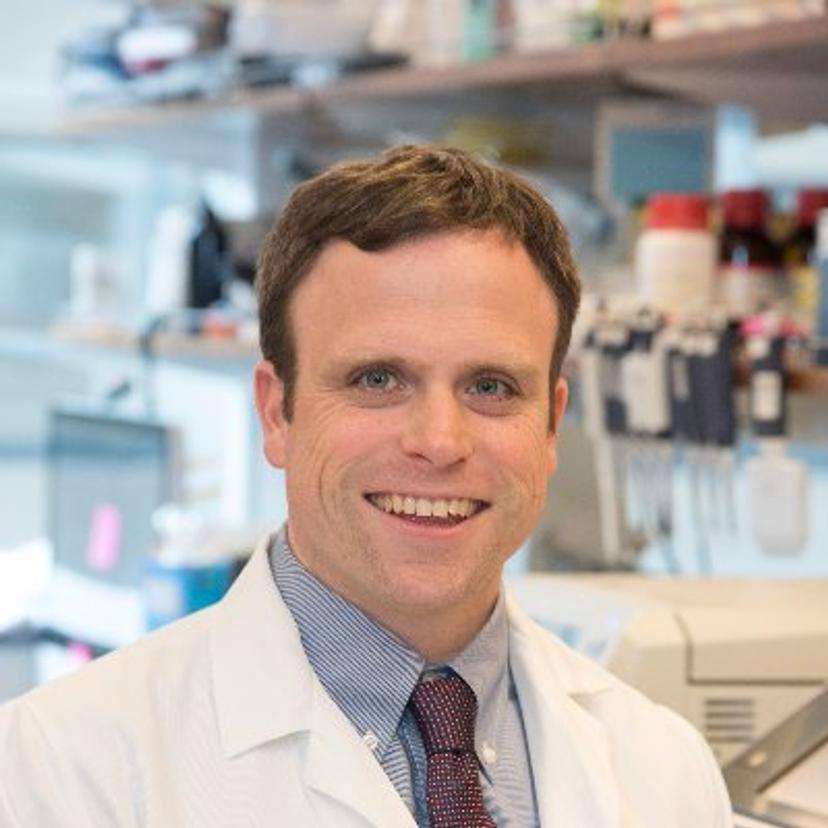COVID-19: Sequencing, the cytokine storm, and space travel
Dr. Chris Mason shares his extensive research into the SARS-CoV-2 immune response and the similarities experienced by astronauts landing back on Earth
30 Nov 2020

Perhaps known best for his work on the NASA Twin Study in 2019, Dr. Christopher Mason, associate professor of physiology and biophysics and of computational genomics, director of the WorldQuant Institute for Quantitative Prediction and the WorldQuant Research Scholar at Weill Cornell Medicine, runs what he calls a ‘humid’ laboratory: a half-wet biochemical lab and half-dry computational lab, aiming to elucidate the genetic basis of the human body in health and disease states. In this interview, Mason shares his recent efforts in the fight against COVID-19, from viral sequencing of samples from patients and public spaces, to linking the SARS-CoV-2-inflicted cytokine storm with what he calls ‘space genomics’.
“There are very few labs looking into space genomics,” explains Mason. “However, I think the future will see a lot more focus in this area, because some of the fundamental questions for our understanding of how the body responds to stress are similar to how we look at space flight.” Mason’s work operates on the basis that, if you can understand the human body and its responses well enough to model it, you can then begin to engineer cells to counteract these responses, including infection, radiation, and even cancer. In monitoring the biological reactions of astronauts as they travel and return from space, this knowledge can be used to engineer cells so that they can resist the associated challenges of space flight and also help terrestrial patients. Most recently, Mason and his team have been applying this theory to those affected by SARS-CoV-2.
Coming back to Earth with the cytokine storm
Under normal conditions, the human immune system is built to regulate itself and its response to pathogens. However, almost every component is overactivated or mis-activated during a COVID-19 infection. This so-called cytokine storm is one of the biggest challenges when it comes to the prognosis and treatment of infected patients.
Due to its importance in COVID-19 outcomes, Mason is currently trying to better understand the cytokine storm and has noted parallels between the body’s response to the novel respiratory virus and the stress of landing back on earth. “As we were analyzing some of the COVID-19 data, it felt like we were analyzing return-to-gravity data again,” says Mason.
As part of the aforementioned NASA Twin Study, an increase in the interleukin-6 (IL-6) cytokine was highlighted as one of the biggest signatures of returning back to Earth, spiking up to 30 times higher than normal baseline levels. “It looked as if the body responds to getting COVID-19 like it does to a return to Earth after a year in space and suddenly having gravity again,” Mason explains. “But in COVID-19, this reaction is consistent and does not resolve in 1-2 days — it is like swimming through mud for weeks after the initial infection.” Due to this prolonged reaction, COVID-19 infection causes much more damage, and it is still unclear why.
To unravel some of these mysteries, Mason and his team are working to better understand the virus, and the body’s response, in the hopes of improving diagnostics and informing more effective treatment plans and pharmacological interventions. To do this, an understanding of the viral sequence and where the virus is mutating is crucial.
Need for speed: Rapid detection with LAMP
Since the first case of COVID-19 was reported in the U.S., Mason has been running towards the fire. His team began to sequence clinical samples in the hopes of uncovering the different SARS-CoV-2 genetic variants present in New York City and to see how the virus is moving through populations. “It was easy to see that the New York City strain was unique,” explains Mason. “This was due to the presence of the ‘20C clade’ – a slight variation of the virus – which seemed to rampage through New York.”
For this viral identification work, Mason’s group is extracting nucleic acids with help from the DreamPrep™ NAP workstation from Tecan. The difficulty is that traditional SARS-CoV-2 detection relies on qRT-PCR to detect and amplify the viral RNA obtained from the patient with an uncomfortable and invasive nasopharyngeal swab and requires hours of wait time to receive useable results. To address this, Mason has developed a novel method based on loop-mediated isothermal amplification (LAMP).
The new LAMP-based colorimetric test is a low-cost technique, performed in a single tube, that quickly amplifies RNA with high specificity and can be performed using both traditional nasopharyngeal swabs and less-invasive saliva samples to detect SARS-CoV-2 in 10-30 minutes. With its speed and simplicity, this alternative method has already shown potential in the clinic and could help reduce pressures on testing laboratories. Mason hopes that with continued optimization and widespread deployment, this method could revolutionize screening around the world, with plans for it to be adjusted to meet the requirements of emerging pathogens and potentially conquer future pandemics.
New hope for coronavirus research
Whilst Mason sees a lot of exhaustion in the field, he is also pleased to see a lot of hope that the concentrated and collaborative scientific and technological effort will lead us in the right direction. “There's just so much about this coronavirus that's different and unique, so it’s been a stressful time for researchers and clinicians everywhere,” explains Mason. “Since the onset, we’ve been almost exclusively focused on the processing and profiling of COVID-19 to improve our understanding of its structure, how it mutates and moves through the population, and now we are learning how to adapt this knowledge into a clinical and pharmaceutical context - together, we’ll get there.”
Resources:

